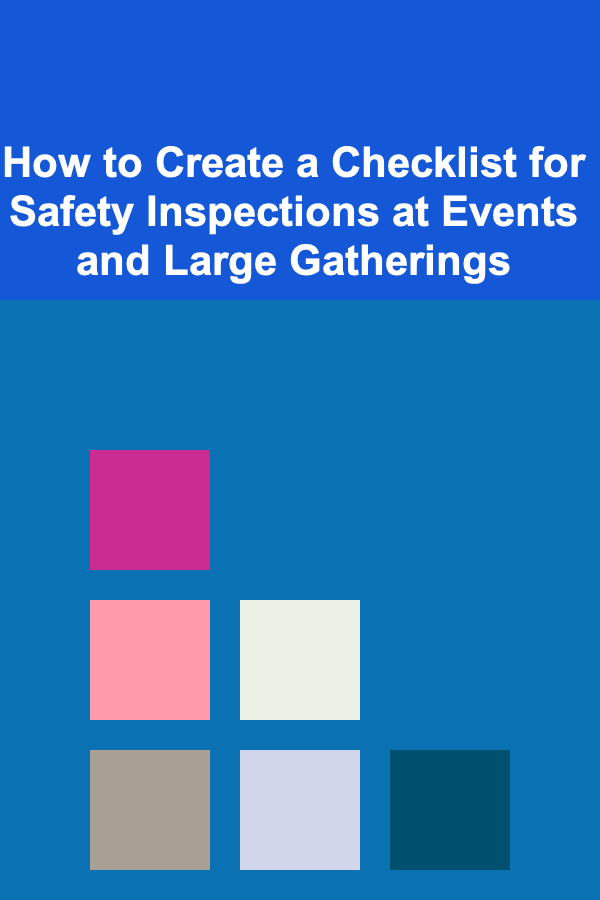
How To Deal with Communication Breakdowns
ebook include PDF & Audio bundle (Micro Guide)
$12.99$11.99
Limited Time Offer! Order within the next:

Communication is the foundation of any successful relationship, whether personal or professional. The ability to communicate effectively can foster stronger connections, improve understanding, and prevent conflicts. However, communication is a two-way process that relies on both parties understanding each other clearly. A communication breakdown occurs when this process fails, and misunderstandings, frustration, or even anger arise as a result.
In both professional settings and personal relationships, communication breakdowns can have significant negative consequences. They can lead to inefficiencies at work, hurt feelings, misunderstandings, and even the collapse of relationships. Therefore, understanding how to deal with communication breakdowns is crucial for anyone looking to build and maintain healthy and effective connections with others.
In this article, we will explore the causes of communication breakdowns, how to recognize them, and various strategies for resolving and preventing these breakdowns from happening in the future.
Understanding the Causes of Communication Breakdowns
Before we can address how to deal with communication breakdowns, it's essential to understand what causes them. Communication breakdowns are not random occurrences but rather the result of several underlying factors. Identifying these causes can help us take preventative measures and approach problems with better awareness.
1. Misinterpretation of Messages
One of the most common causes of communication breakdowns is the misinterpretation of messages. Often, people fail to convey their ideas or emotions clearly, leading to confusion about the intended message. This misinterpretation can happen for a variety of reasons:
- Lack of clarity: The message being communicated is vague or incomplete, leaving room for interpretation.
- Tone of voice: The tone in which something is said can sometimes change the entire meaning of a message, leading to misunderstandings.
- Non-verbal cues: Body language, facial expressions, and gestures can also contribute to misinterpretations if they are not aligned with the verbal message.
2. Assumptions and Prejudices
People often assume that others understand them in the same way they understand themselves, or they project their personal biases onto others. These assumptions can cloud the clarity of communication and lead to breakdowns.
- Cultural differences: People from different cultural backgrounds may interpret words, gestures, or expressions differently.
- Personal biases: Preconceived notions or stereotypes can influence how we perceive what others are saying, often distorting the message.
3. Lack of Active Listening
Communication is not just about speaking but also about listening. Active listening involves paying full attention to the speaker, understanding their message, and responding thoughtfully. When people fail to listen actively, they miss vital parts of the message, leading to confusion or a lack of understanding.
- Interruptions: When one person interrupts another while they are speaking, it can create frustration and prevent the full message from being conveyed.
- Distractions: External distractions, such as noise, technology, or multitasking, can impair our ability to listen effectively.
4. Emotional Responses
Emotions play a significant role in communication, and when people are emotionally charged, their ability to communicate clearly can diminish. Strong emotions such as anger, frustration, or stress can lead to impulsive reactions or defensive communication, which can further escalate misunderstandings.
- Reacting instead of responding: When emotions are high, individuals may react without considering the implications of their words or actions, leading to communication breakdowns.
- Failure to regulate emotions: People who cannot control their emotions may say things they do not mean or misinterpret others' intentions.
5. Technological Barriers
In today's digital age, much of our communication takes place through technology, such as emails, text messages, or video calls. While these tools make communication more accessible, they can also contribute to communication breakdowns.
- Lack of tone: Written communication, particularly emails or texts, lacks tone and body language, making it easier for messages to be misinterpreted.
- Technical issues: Poor internet connections or technical failures in communication tools can disrupt conversations and cause delays or misunderstandings.
6. Different Communication Styles
People communicate in different ways, depending on their personality, background, or culture. Some people prefer direct, straightforward communication, while others may rely on indirect communication. These differences can lead to confusion or conflict if both parties do not understand or respect each other's communication style.
- Direct vs. indirect communication: Some cultures and individuals value clear, concise communication, while others rely more on subtlety and nuance.
- Formal vs. informal communication: In professional settings, misalignments in communication expectations can lead to frustration.
Recognizing the Signs of Communication Breakdown
Recognizing the signs of a communication breakdown is the first step in resolving the issue. Effective communication is not only about speaking clearly but also about observing the cues of the other person. When communication breaks down, there are often visible or subtle signs.
1. Confusion or Misunderstanding
When people are confused about what was said or meant, this is often the first sign of a communication breakdown. This may manifest as questioning, requesting clarification, or giving contradictory responses.
2. Defensiveness or Escalation
When communication breaks down, people may become defensive or start escalating the conversation. They may interrupt, talk over the other person, or engage in an argument instead of working towards a resolution.
3. Silent Treatment or Withdrawal
On the other hand, some individuals may withdraw or shut down when there is a breakdown in communication. They may avoid engaging in the conversation, leading to silence, discomfort, and unresolved issues.
4. Frustration or Irritation
Communication breakdowns can quickly lead to frustration or irritation, especially when people feel that they are not being heard or understood. This frustration can manifest as body language, tone of voice, or even sarcastic comments.
5. Increased Miscommunication
If a communication breakdown has occurred, it often leads to more misunderstandings. For example, one person may repeat their message in different ways, but the other person still fails to comprehend.
Strategies to Deal with Communication Breakdowns
Now that we understand the causes and signs of communication breakdowns, it's time to explore strategies for dealing with them. These strategies focus on improving clarity, active listening, emotional regulation, and conflict resolution.
1. Clarify and Confirm the Message
If you sense a breakdown in communication, the first step is to clarify and confirm the message. This can be done by asking questions or repeating what the other person has said to ensure that you understand their point correctly.
- Paraphrasing: When someone communicates something to you, repeat it back in your own words to check your understanding.
- Asking open-ended questions: Open-ended questions help to encourage further clarification and ensure the message is clear.
2. Engage in Active Listening
Active listening is a crucial skill for overcoming communication breakdowns. When you listen actively, you focus entirely on the speaker, avoid interrupting, and respond thoughtfully. Here's how to practice active listening:
- Maintain eye contact: This shows the speaker that you are engaged and attentive.
- Avoid distractions: Turn off your phone or other distractions to fully concentrate on the conversation.
- Ask clarifying questions: If you don't understand something, ask questions to get more details before responding.
3. Check for Non-Verbal Cues
Non-verbal communication---such as body language, facial expressions, and gestures---plays a significant role in how messages are understood. During conversations, pay attention to non-verbal cues, both your own and those of the other person, to ensure that the message is being conveyed accurately.
- Body language: Are your gestures and posture open and inviting, or do they suggest defensiveness or disinterest?
- Facial expressions: Are your emotions visible on your face? Do they align with the words you're saying?
- Tone of voice: Ensure that your tone matches the message you intend to convey.
4. Use Clear and Concise Language
One of the simplest ways to prevent a communication breakdown is to use clear and concise language. Avoid jargon, overly complex sentences, and ambiguity. Instead, be straightforward and direct in your message.
- Be specific: Provide concrete examples and avoid using vague terms that might leave room for interpretation.
- Use simple language: Choose words that are easily understood by the other person, avoiding overly technical terms unless necessary.
5. Manage Your Emotions
Emotions can cloud our judgment and make communication more difficult. If you feel yourself becoming frustrated or angry during a conversation, take a step back and regulate your emotions before continuing the discussion.
- Pause and breathe: If you feel yourself getting upset, take a moment to breathe and calm down before responding.
- Acknowledge your emotions: It's important to recognize and acknowledge your feelings, but you should aim to express them calmly and respectfully.
6. Establish Ground Rules for Communication
In professional settings or ongoing personal relationships, it can be helpful to establish ground rules for communication to avoid breakdowns in the future. These rules could include:
- No interrupting: Give each person a chance to speak without cutting them off.
- Respectful tone: Agree to maintain a respectful and calm tone, even during disagreements.
- Active listening: Agree to practice active listening and avoid distractions during conversations.
7. Seek Mediation When Necessary
In cases where communication breakdowns persist and escalate, it may be necessary to involve a neutral third party for mediation. Mediators can help facilitate communication and ensure that both parties are heard, helping to resolve conflicts and rebuild trust.
- Mediation in professional settings: If there are ongoing communication issues in the workplace, a human resources (HR) professional or supervisor can act as a mediator.
- Mediation in personal relationships: In personal relationships, a trusted friend or family member can step in as a mediator to help resolve the issue.
8. Follow Up and Review
After the conversation, it's essential to follow up and review the outcome to ensure that both parties are satisfied with the resolution. A follow-up can also serve as an opportunity to clear up any remaining confusion and confirm mutual understanding.
- Check for understanding: Revisit the topic after some time to ensure that the communication breakdown has been addressed.
- Provide feedback: Share feedback on the conversation, including what worked well and what could be improved in future discussions.
Conclusion
Communication breakdowns are a natural part of human interaction, but they don't have to lead to long-lasting problems. By understanding the causes of communication breakdowns and employing strategies such as active listening, emotional regulation, and clarity in communication, we can effectively address misunderstandings and strengthen our relationships.
The key is to approach communication with patience, empathy, and a willingness to improve. Whether in personal relationships or the workplace, developing effective communication skills can lead to better collaboration, stronger bonds, and more successful interactions overall.
Reading More From Our Other Websites
- [Scrapbooking Tip 101] Best Scrapbooking Tips for Creating Stunning Travel Journals
- [Personal Finance Management 101] How to Get Out of Debt Fast: Proven Methods for Rapid Debt Elimination
- [Home Cleaning 101] How to Clean a Fireplace and Keep It Safe
- [Organization Tip 101] Why Keeping a Home Inventory Simplifies Insurance Claims
- [Whitewater Rafting Tip 101] Safety First: How to Seamlessly Blend Rafting Techniques with Wilderness Camping Skills
- [Mindful Eating Tip 101] How to Use Aromatherapy to Enhance Mindful Eating Sessions at Home
- [Personal Finance Management 101] How to Avoid Lifestyle Inflation and Stay Financially Disciplined
- [Personal Investment 101] How to Set Financial Goals to Guide Your Investment Decisions
- [Sewing Tip 101] Best Secrets for Sewing Seamless Underwear with Laser‑Cut Fabrics
- [Home Cleaning 101] How to Deal with Hard Water Stains in Your Bathroom

How to Create a Checklist for Safety Inspections at Events and Large Gatherings
Read More
How to Invest in Precious Metals Like Gold and Silver
Read More
How to Organize Children's Toys Without the Mess
Read More
How to Protect Your Home from Pests with Preventative Maintenance
Read More
Navigating Complex Networks: Strategies and Best Practices for a Network Administrator
Read More
The Administrative Assistant's Guide to Efficiency and Organization
Read MoreOther Products

How to Create a Checklist for Safety Inspections at Events and Large Gatherings
Read More
How to Invest in Precious Metals Like Gold and Silver
Read More
How to Organize Children's Toys Without the Mess
Read More
How to Protect Your Home from Pests with Preventative Maintenance
Read More
Navigating Complex Networks: Strategies and Best Practices for a Network Administrator
Read More